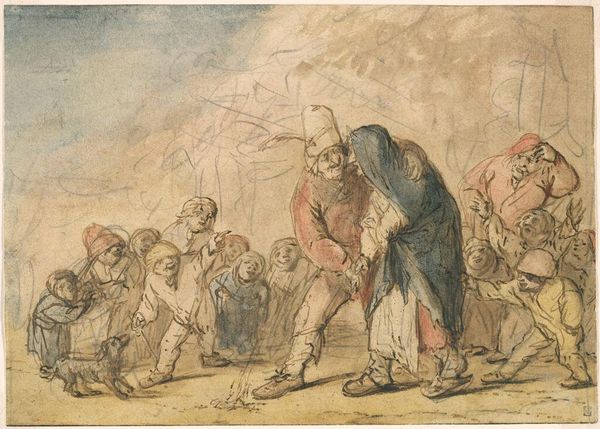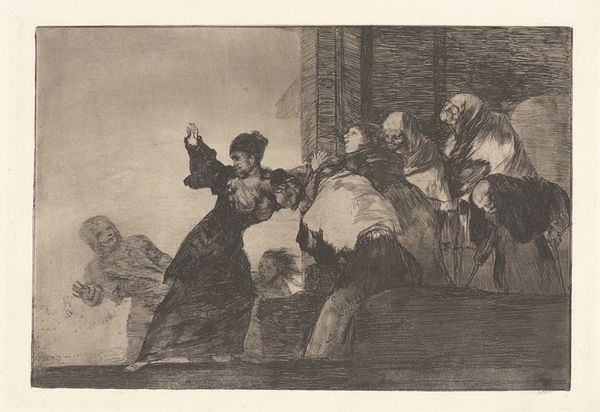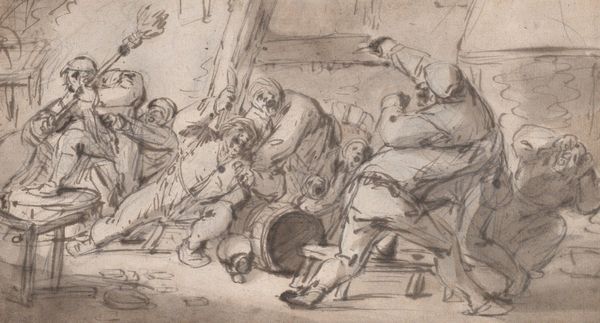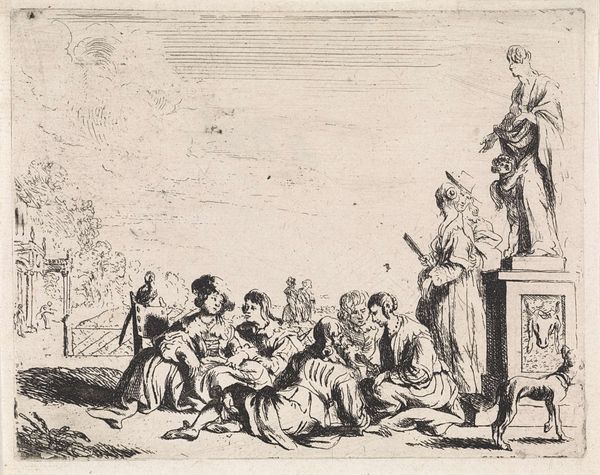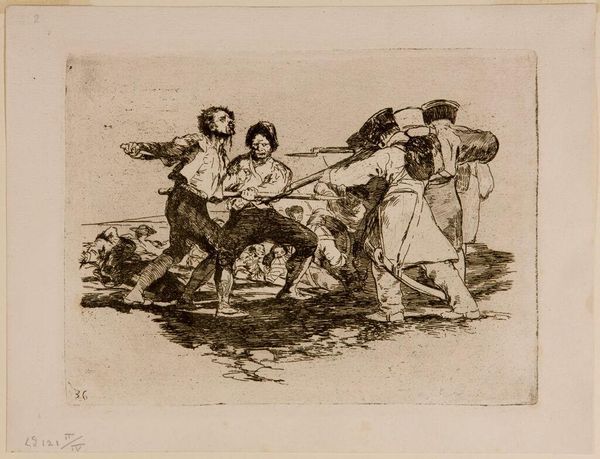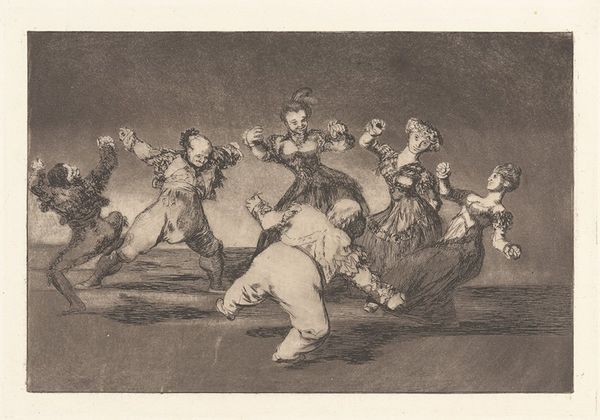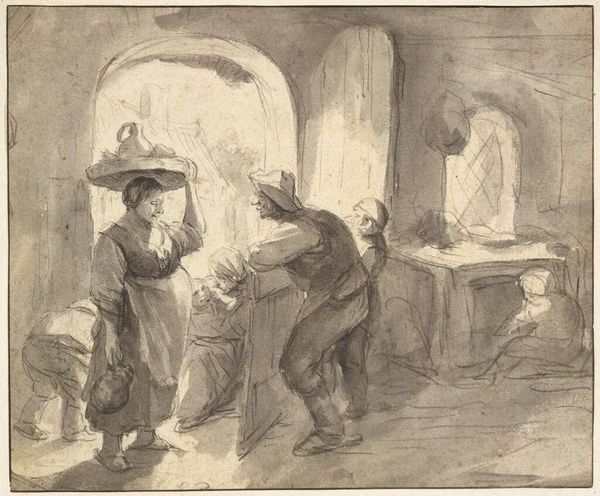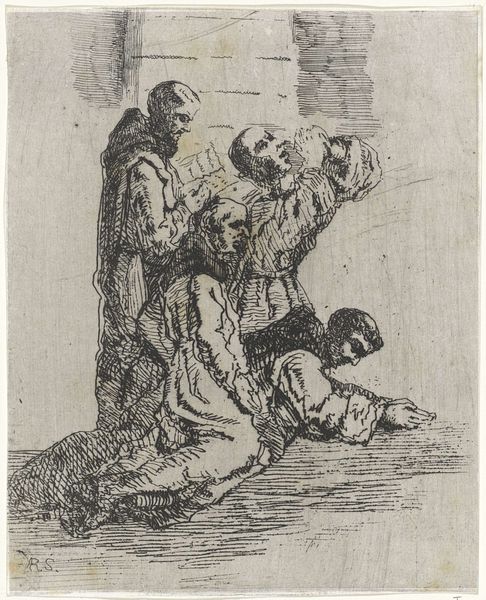
drawing, watercolor, ink
#
portrait
#
drawing
#
16_19th-century
#
charcoal drawing
#
watercolor
#
ink
#
group-portraits
#
portrait drawing
#
watercolour illustration
#
genre-painting
#
realism
Dimensions: 21 x 29 cm
Copyright: Public domain
Curator: Honoré Daumier’s "Defense Attorney," created around 1865, employs ink, watercolor and charcoal to capture a courtroom scene, currently residing in a Private Collection. What are your first impressions? Editor: Chaotic. The scene feels crowded, claustrophobic even, and there's a clear emotional intensity radiating from the central figures. The color palette is subdued, which amplifies the drama rather than diminishes it. Curator: It's interesting you say that, because Daumier was deeply invested in documenting the lived experiences of the working class during the Second Empire. His choice of materials - ink wash and charcoal - are incredibly accessible. We aren't talking about oil on canvas; Daumier used what was at hand to depict a raw reality. This speaks volumes about who he was trying to reach with his art. Editor: True, the materials underscore the gritty reality, but consider how Daumier manipulates light and shadow. Notice how he directs our gaze by highlighting the faces, particularly that of the impassioned defense attorney? The composition itself argues a point. There’s definitely a statement about social justice encoded within the formal elements. Curator: I agree, but what kind of labor went into this image? These lawyers and their clients were often embroiled in exploitative legal systems. I see the artist wrestling with those same societal inequities via his quick sketch, his cheap paper, his fluid but dark marks... the materials were available, but the skill was hard-won, it isn't incidental that this specific grouping of people have power in their courtroom scenario, Daumier understood labor at the intersection of societal hierarchy. Editor: But Daumier isn’t merely documenting labor, is he? He's actively shaping our perception through design, by the conscious exaggeration of facial features, which becomes a study of expression. The turn of a head, the furrow of a brow, the subtle hand gestures… these are formal elements creating and enhancing the feeling of raw urgency in that particular courtroom setting. Curator: And it does both simultaneously, creating artwork to move and relate with at varied social spheres and echelons, showing the same people who are enmeshed within corrupt systems, making choices of style, composition, and tone. This isn't accidental! Editor: I see your point, reflecting on his technical prowess and social consciousness enriches my reading of the work.
Comments
No comments
Be the first to comment and join the conversation on the ultimate creative platform.

